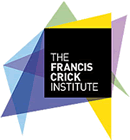About the Project
This 4-year PhD studentship is offered in Dr Nathan Goehring’s Group based at the Francis Crick Institute (the Crick).
The development of an organism from a single undifferentiated cell is enormously complex. An essential feature of this process is the formation spatial patterns by so-called morphogens, which provide landmarks for organising developmental processes. At the tissue scale, such patterns provide cues to guide the location and fate of cells within an organism. So too, intracellular patterns govern cells’ internal organisation, providing a coordinate system to enable proper orientation with respect to neighbours and the environment.
Our lab focuses on understanding intracellular pattern formation by the conserved PAR polarity machinery, which compartmentalizes the cell membrane into complementary domains that define the polarity axis. Polarization is essential for animal development from worms to humans, and is implicated in axis specification, tissue organization and asymmetric stem cell divisions. Defects in polarity are associated with cancer progression and metastasis. Most of the molecules required for PAR polarity have been identified. Our current challenge is to develop a systems-level understanding of how spatial organization at the cellular scale emerges from the individual activities of and interactions between these molecules.
The nematode worm Caenorhabditis elegans is an ideal model for this work. It has a reproducible and rapid development, its early developmental stages are accessible to manipulation and live imaging, and there is a robust set of genetic and RNAi-based tools for probing protein function in living animals. We are particularly interested in understanding the network properties and design principles of the PAR polarity pathway that enable this highly conserved set of proteins to polarize diverse cell types during animal development. Examples of questions we are currently addressing include: How are PAR distributions shaped by the physical properties of proteins and their local environment? How does this network adapt to changes in cell size / shape that occur during development? What is the wiring logic of the protein network that permits mutually exclusive protein distributions? How is the wiring of the system regulated to ensure cells polarize at the proper time and place? To address these questions, we are combining traditional cell and molecular biology with the development of new tools for manipulating the activities and physical properties of proteins in living embryos at high spatiotemporal precision as well as the development of mathematical models to quantitatively test models for pattern formation.
We are looking for a highly motivated student to tackle these fundamental questions within a multidisciplinary environment. This project potentially involves a broad range of techniques including 3-D time-lapse confocal microscopy, quantitative image analysis, photobleaching and photoactivation, RNAi, CRISPR, biochemistry, quantitative proteomics, chemical biology, and computational modeling, which will be tailored to the student’s interests and aptitude. A variety of backgrounds will be considered (e.g. physics, biology, biochemistry) and a general curiosity and willingness to embrace team effort will be essential. Note that this project description illustrates the types of questions that occupy us in the lab. Individual projects will be developed together with the supervisor, taking into account the student’s background and specific scientific interests.
Talented and motivated students passionate about doing research are invited to apply for this PhD position. The successful applicant will join the Crick PhD Programme in September 2019 and will register for their PhD at one of the Crick partner universities (Imperial College London, King’s College London or UCL).
Applicants should hold or expect to gain a first/upper second-class honours degree or equivalent in a relevant subject and have appropriate research experience as part of, or outside of, a university degree course and/or a Masters degree in a relevant subject.
APPLICATIONS MUST BE MADE ONLINE VIA OUR WEBSITE (ACCESSIBLE VIA THE ‘APPLY NOW’ LINK ABOVE) BY 12:00 (NOON) NOVEMBER 13 2018. APPLICATIONS WILL NOT BE ACCEPTED IN ANY OTHER FORMAT.
References
1. Rodriguez, J., Peglion, F., Martin, J., Hubatsch, L., Reich, J., Hirani, N., . . . Goehring, N. W. (2017)
aPKC cycles between functionally distinct PAR protein assemblies to drive cell polarity.
Developmental Cell 42: 400-415. PubMed abstract
2. Goehring, N. W. (2014)
PAR polarity: from complexity to design principles.
Experimental Cell Research 328: 258-266. PubMed abstract
3. Goehring, N. W. and Grill, S. W. (2013)
Cell polarity: mechanochemical patterning.
Trends in Cell Biology 23: 72-80. PubMed abstract
4. Goehring, N. W., Trong, P. K., Bois, J. S., Chowdhury, D., Nicola, E. M., Hyman, A. A. and Grill, S. W. (2011)
Polarization of PAR proteins by advective triggering of a pattern-forming system.
Science 334: 1137-1141. PubMed abstract
5. Goehring, N. W., Hoege, C., Grill, S. W. and Hyman, A. A. (2011)
PAR proteins diffuse freely across the anterior-posterior boundary in polarized C. elegans embryos.
Journal of Cell Biology 193: 583-594. PubMed abstract

 Continue with Facebook
Continue with Facebook

